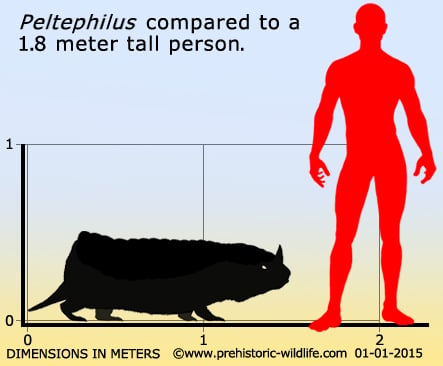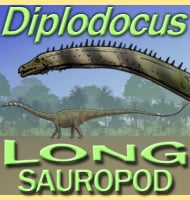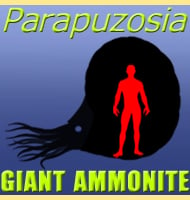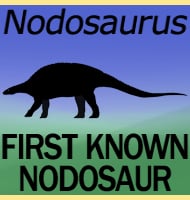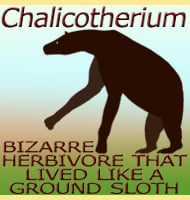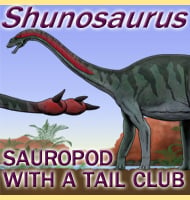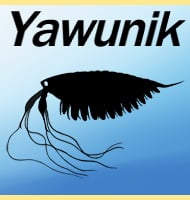In Depth
Peltephilus was an extinct relative of today’s armadillos, though its large size makes it comparable to the largest of today’s species such as the giant armadillo (Priodontes maximus) which has a combined head and tail length of one hundred and fifty centimetres (one hundred for the body and fifty for the tail). The large triangular teeth of Peltephilus have long since been held as proof of a carnivorous diet, though at least one study by S. F. Vizcaino and R. A. Farina in 1997 suggested that Peltephilus was a herbivore.
The most distinctive characteristics of Peltephilus are the large scutes across the back and top of the head and the horns on the snout. The scutes were arranged in bands along the back to allow for a strong yet flexible covering of armour that would have proved a formidable defence against the teeth and possibly beaks of South American predators of this time. At least one pair of horns rose up from the snout between the eyes and nostrils of the skull, with a possible second smaller pair on the front of the snout. Since these horns are not normally seen in other armadillos, they most likely served a species specific purpose of display.
Peltephilus also had large claws on feet that were on the ends of short legs. These would have been perfect for digging, possibly even ripping open ant nests and termite colonies.
Further Reading
– Enumeration Synoptique des especes de mammiferes fossiles des formations Eocenes de Patagonie. – Boletin de la Academia Nacional de Ciencias en Cordoba (Republica Argentina) 13:259-452. – F. Ameghino – 1894. – Mamiferos Cretaceos de la Argentina. Segunda contribucion al conocimiento de la fauna mastologica de las capas con restos de Pyrotherium. – Boletin Instituto Geografico Argentino 18:406-521. – F. Ameghino – 1897. – Diet and locomotion of the armadillo Peltephilus: a new view. – Lethaia, 30, 79-86. – S. F. Vizcaino & R. A. Farina – 1997.
